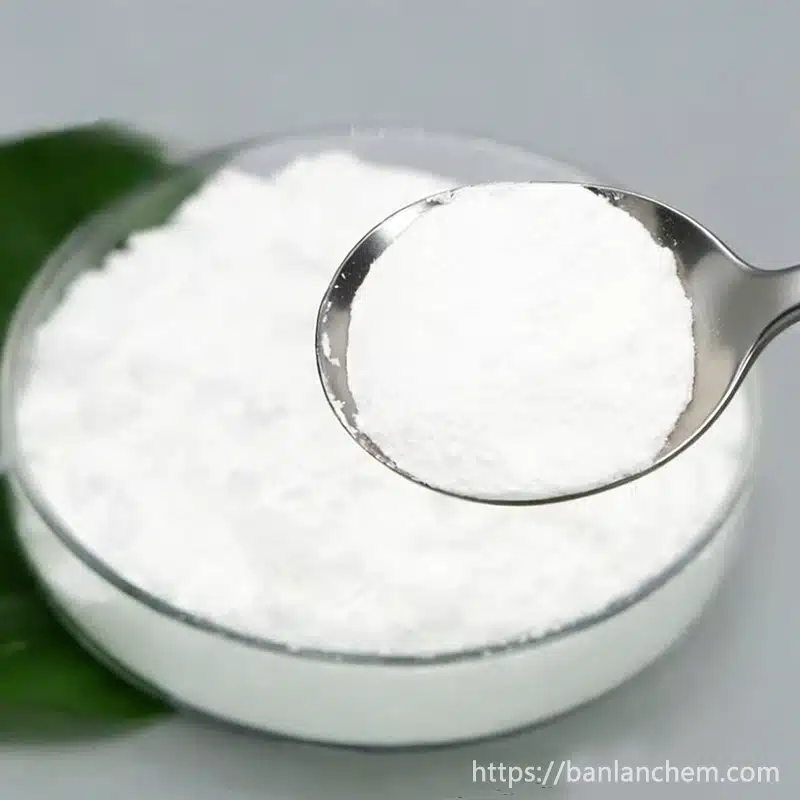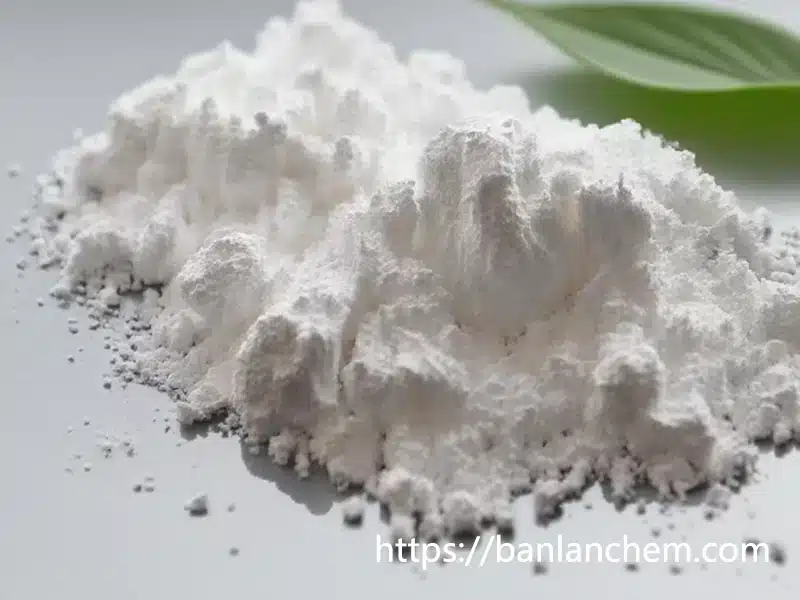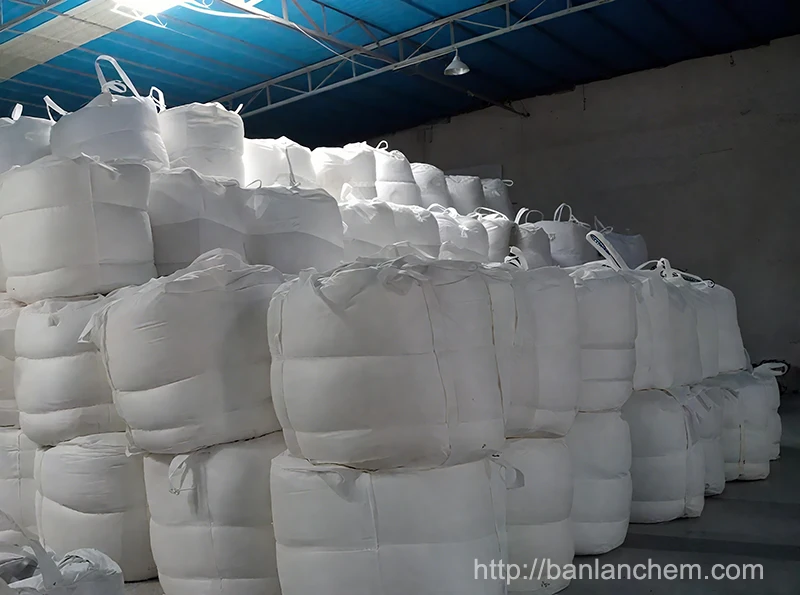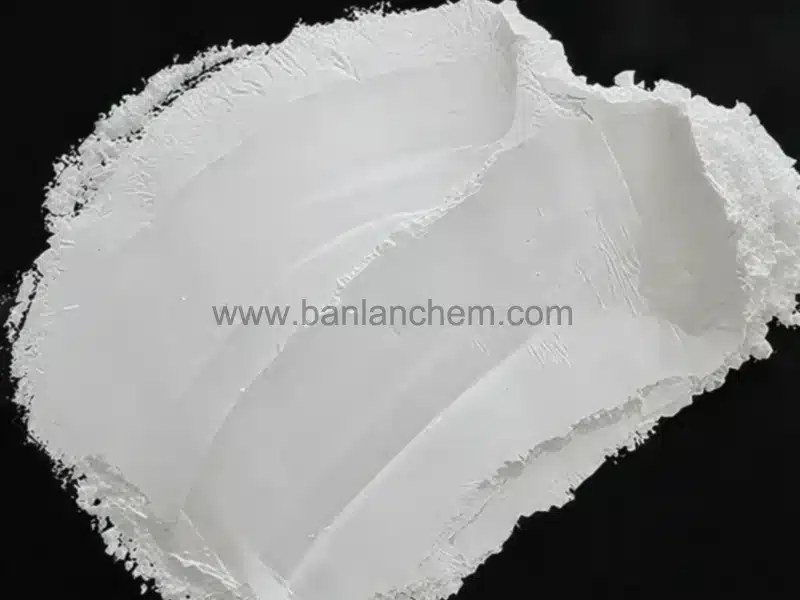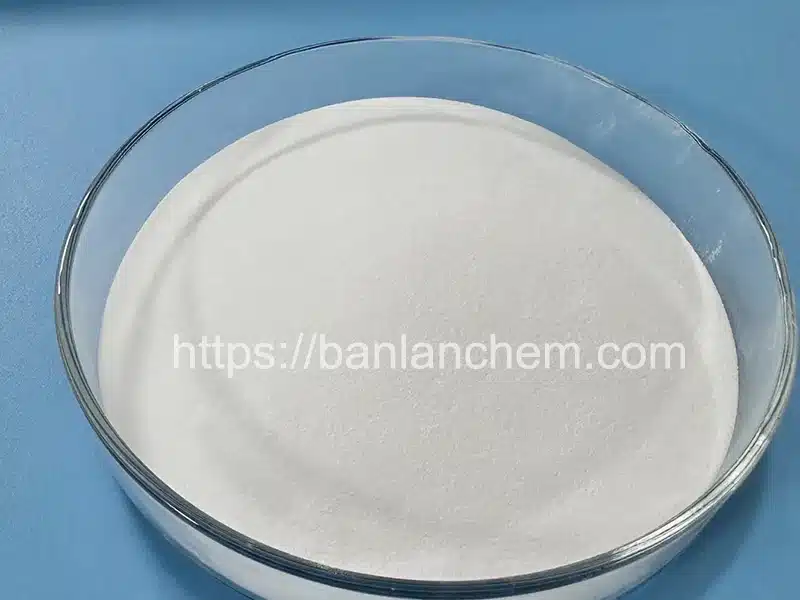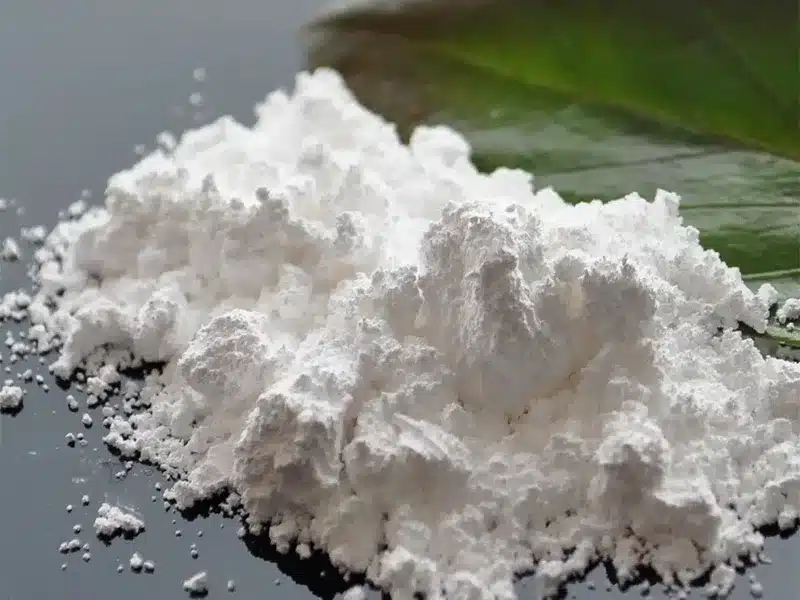Tabular Alumina for Refractory Applications, Properties, and Advantages
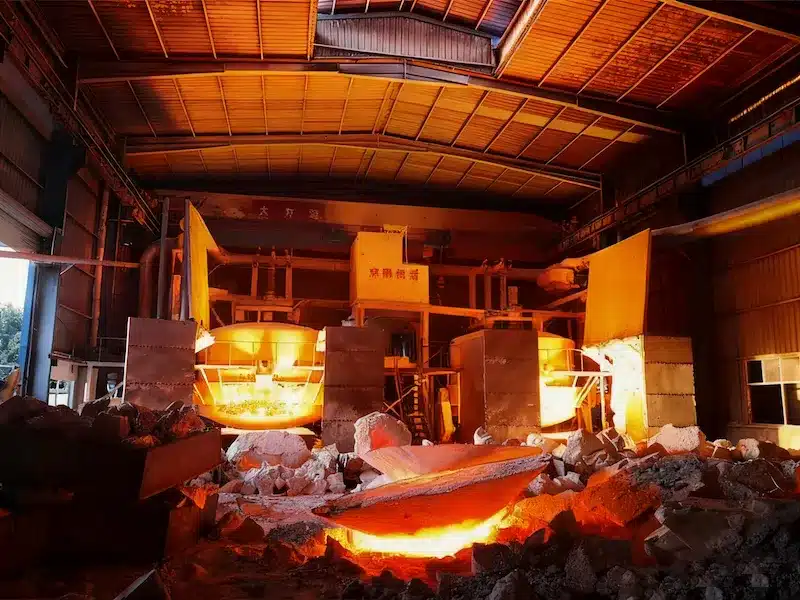
Tabular Alumina for Refractory Applications is a premium-grade material widely used in high-temperature and high-stress industrial environments. Known for its exceptional thermal stability, low porosity, and superior mechanical strength, this material plays a crucial role in manufacturing refractory products, steelmaking equipment, and advanced ceramics. At BanlanChem, we specialize in producing high-quality tabular alumina with consistent particle size and outstanding performance. OEM samples and bulk supply are available upon request.
1. What Is Tabular Alumina for Refractory Applications?
Tabular alumina is a sintered form of α-alumina (Al₂O₃) characterized by its large, well-developed hexagonal crystals. It is produced by heating pure calcined alumina at extremely high temperatures—typically above 1,800°C—to form dense, tabular-shaped crystals without the addition of sintering aids.
This unique microstructure gives tabular alumina its outstanding refractoriness, high mechanical strength, and resistance to thermal shock. Because of its density and purity, it performs exceptionally well in extreme conditions such as furnace linings, steel ladles, and kiln furniture.
At BanlanChem, our high refractoriness tabular alumina is manufactured under strict quality control to ensure consistency, making it suitable for refractory castables, shaped products, and advanced ceramics.
2. Manufacturing Process of Tabular Alumina
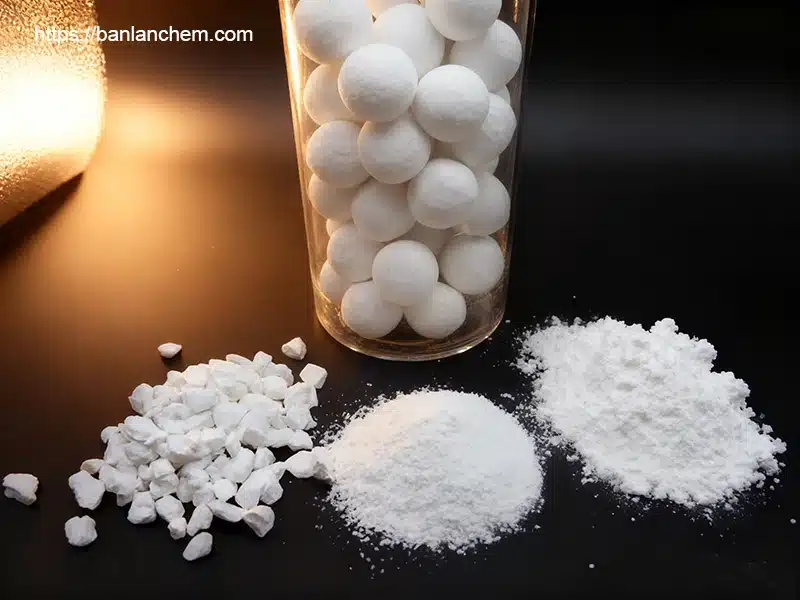
Step 1: High-Purity Raw Material Selection
The process begins with the selection of high-purity alumina powder derived from calcined bauxite. Impurities are carefully removed to ensure maximum alumina content and minimal contamination.
Step 2: Sintering at Ultra-High Temperature
The purified alumina is sintered in an electric arc furnace at temperatures exceeding 1,800°C. During this phase, the alumina crystals grow and fuse, forming dense, tabular grains that are nearly pore-free. This step is essential for achieving superior mechanical and thermal properties.
Step 3: Controlled Cooling and Classification
After sintering, the material is slowly cooled to prevent internal stress and microcracking. It is then crushed, screened, and classified according to grain size—ranging from fine powders to coarse aggregates—suitable for different industrial applications.
This process results in a final product with excellent thermal stability, low porosity, and uniform grain distribution, making it an ideal refractory raw material.
3. Key Properties of High Refractoriness Tabular Alumina
- High Refractoriness: Withstands continuous temperatures up to 1,800°C without softening or deformation.
- High Mechanical Strength: Maintains structural stability under heavy loads and mechanical stress.
- Low Thermal Expansion: Reduces risk of cracking or spalling due to rapid temperature fluctuations.
- Excellent Corrosion Resistance: Resists chemical attack from molten metals and slags.
- Low Porosity: Dense structure minimizes penetration of molten materials and gases.
- Excellent Wear Resistance: Long lifespan in abrasive or erosive environments.
For more detailed product data, refer to the Tabular Alumina Technical Specifications on our website.
4. Industrial Applications
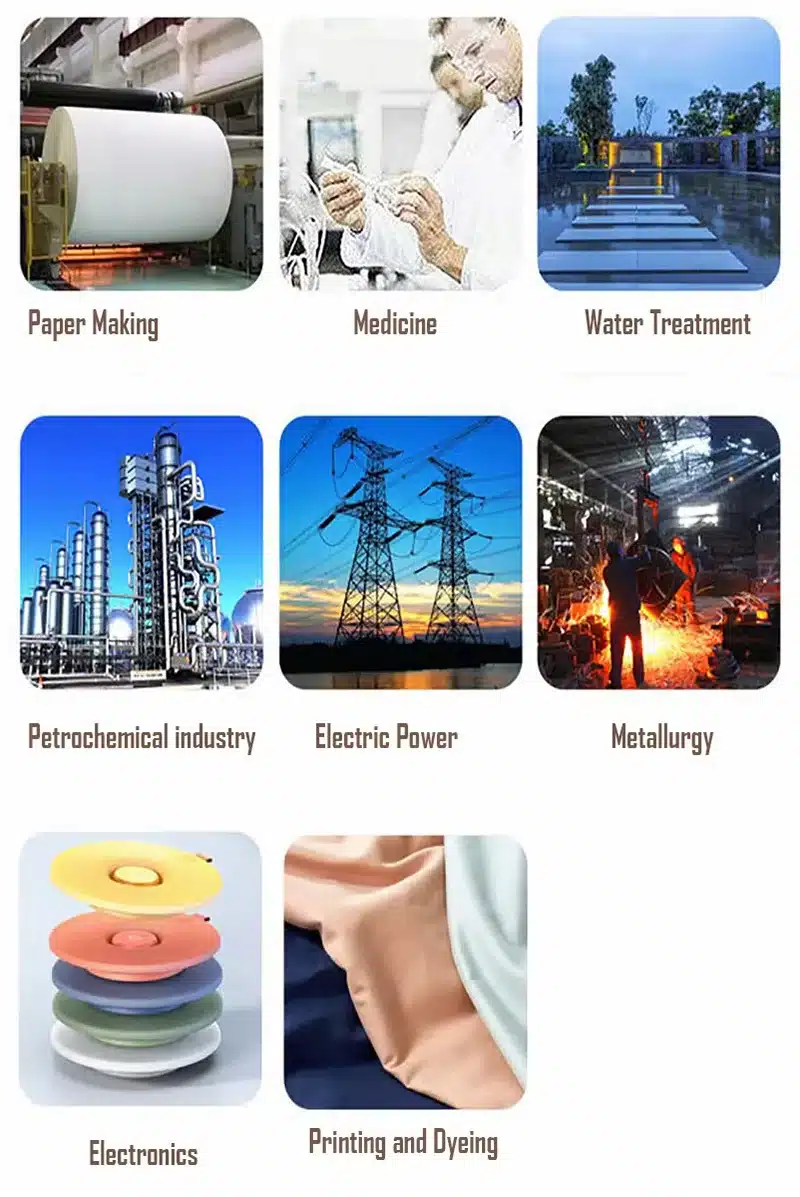
Refractory Applications
Tabular alumina is a key ingredient in high-performance refractory castables and bricks. Its high refractoriness and low thermal expansion make it suitable for use in:
- Steel furnace linings
- Cement rotary kilns
- Glass melting tanks
- Petrochemical reactors
It enhances the strength, thermal stability, and service life of these refractory systems.
Steelmaking and Foundries
In the steel industry, tabular alumina is used for making ladle linings, slide gates, and tundish covers. Its excellent resistance to molten metal and slag corrosion helps extend equipment lifespan and reduce maintenance costs.
Advanced Ceramics
Due to its superior purity and thermal shock resistance, tabular alumina is widely used in technical ceramics, aerospace components, and electronic substrates. It ensures dimensional stability and mechanical integrity in demanding environments.
Thermal Insulation and Abrasives
Tabular alumina is also used in thermal insulation systems and as a raw material in abrasives due to its hardness and low thermal conductivity. Its stability makes it ideal for high-efficiency energy-saving systems.
5. Benefits of Using BanlanChem Tabular Alumina
- Superior Thermal Performance: Maintains structural integrity even under rapid heating and cooling cycles.
- Extended Equipment Life: Reduces refractory wear and downtime in high-temperature installations.
- Customizable Particle Sizes: Available in multiple grades for castables, gunning mixes, and shaped products.
- OEM & Sample Service: Free samples and technical consultation available upon request.
- Factory Direct Supply: Manufactured and exported directly from BanlanChem’s facility, ensuring stable quality and competitive pricing.
6. Comparison with Other Refractory Materials
| Material | Refractoriness (°C) | Strength | Thermal Expansion | Corrosion Resistance | Remarks |
|---|---|---|---|---|---|
| Tabular Alumina | Up to 1,800°C | High | Low | Excellent | Ideal for critical refractory zones |
| Fused Alumina | 1,700°C | Moderate | Moderate | Good | Used in abrasives and ceramics |
| Silicon Carbide | 1,600°C | Very High | High | Good | Preferred for wear-resistant applications |
7. Why Choose BanlanChem as Your Tabular Alumina Manufacturer?

As a leading Chinese manufacturer and global supplier of alumina materials, BanlanChem provides complete solutions for refractory and ceramic industries. Our commitment to quality, precision, and customer satisfaction sets us apart.
We offer:
- Strict quality control and stable supply
- OEM/ODM customization
- Fast delivery and global export support
- Free technical consultation
- Request samples and quotations online
8. Future Outlook and Market Trends
With growing industrial demand for energy-efficient and eco-friendly refractory materials, high refractoriness tabular alumina continues to gain popularity. Advancements in sintering technology are improving its cost-effectiveness, opening new opportunities in steel, cement, and aerospace sectors.
9. Conclusion
High refractoriness tabular alumina stands out for its exceptional combination of strength, durability, and heat resistance. At BanlanChem, we provide factory-direct supply of premium-grade tabular alumina designed for superior performance in refractory, metallurgical, and ceramic applications. Contact us today for samples or customized solutions to meet your production needs.
FAQs About Tabular Alumina for Refractory Applications
1. What is high refractoriness tabular alumina used for?
It is primarily used in refractories, steel furnaces, kilns, and ceramic components exposed to high temperatures.
2. Can BanlanChem provide samples?
Yes, free samples are available for testing and evaluation. Please contact our sales team for details.
3. What makes BanlanChem’s tabular alumina different?
Our material offers consistent particle distribution, high purity, and excellent thermal stability—engineered for demanding industrial conditions.
4. Is it environmentally friendly?
Yes. Tabular alumina is produced from natural raw materials with no additives, making it a sustainable and recyclable refractory choice.
5. What particle sizes are available?
We provide various grades: fine powder (<45 μm), standard (0–1 mm), and coarse (1–5 mm), customizable upon request.


